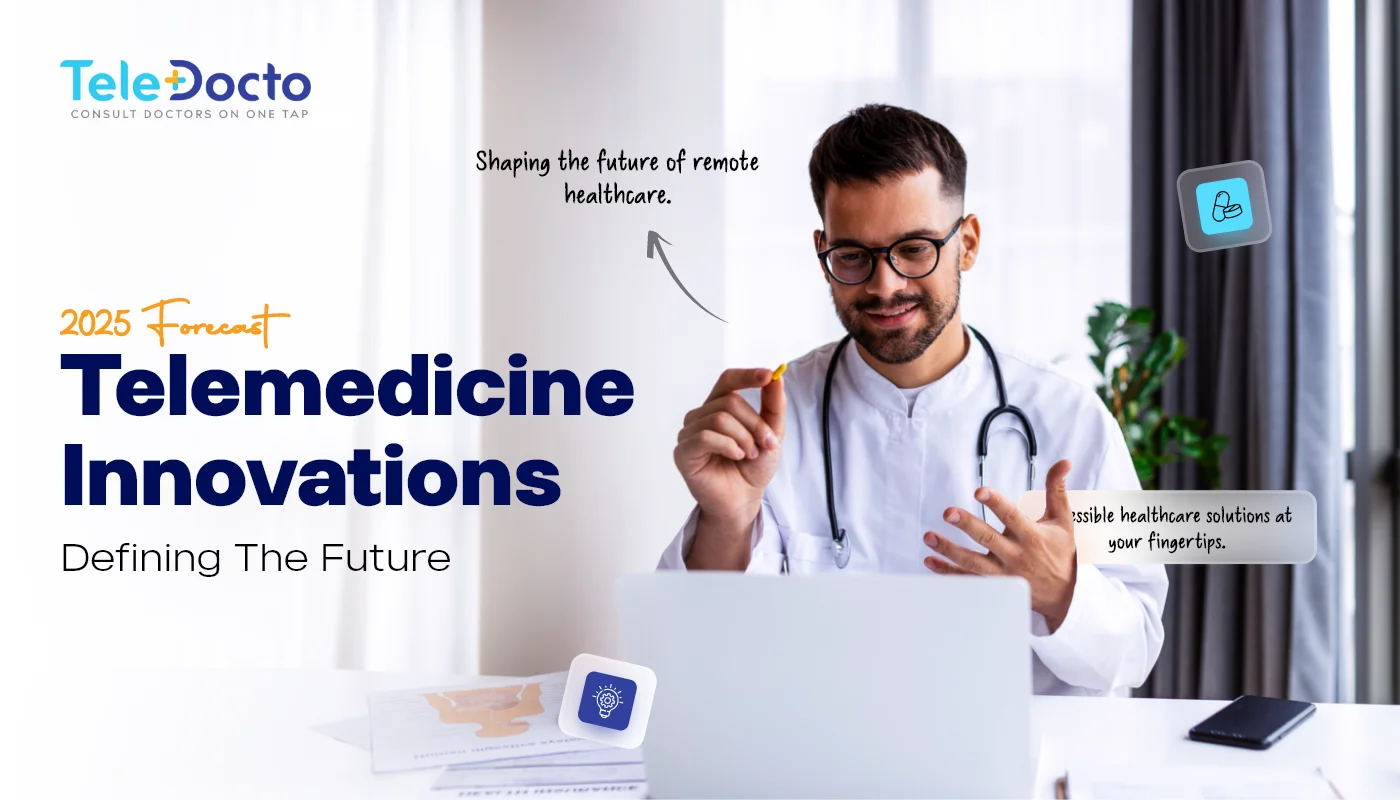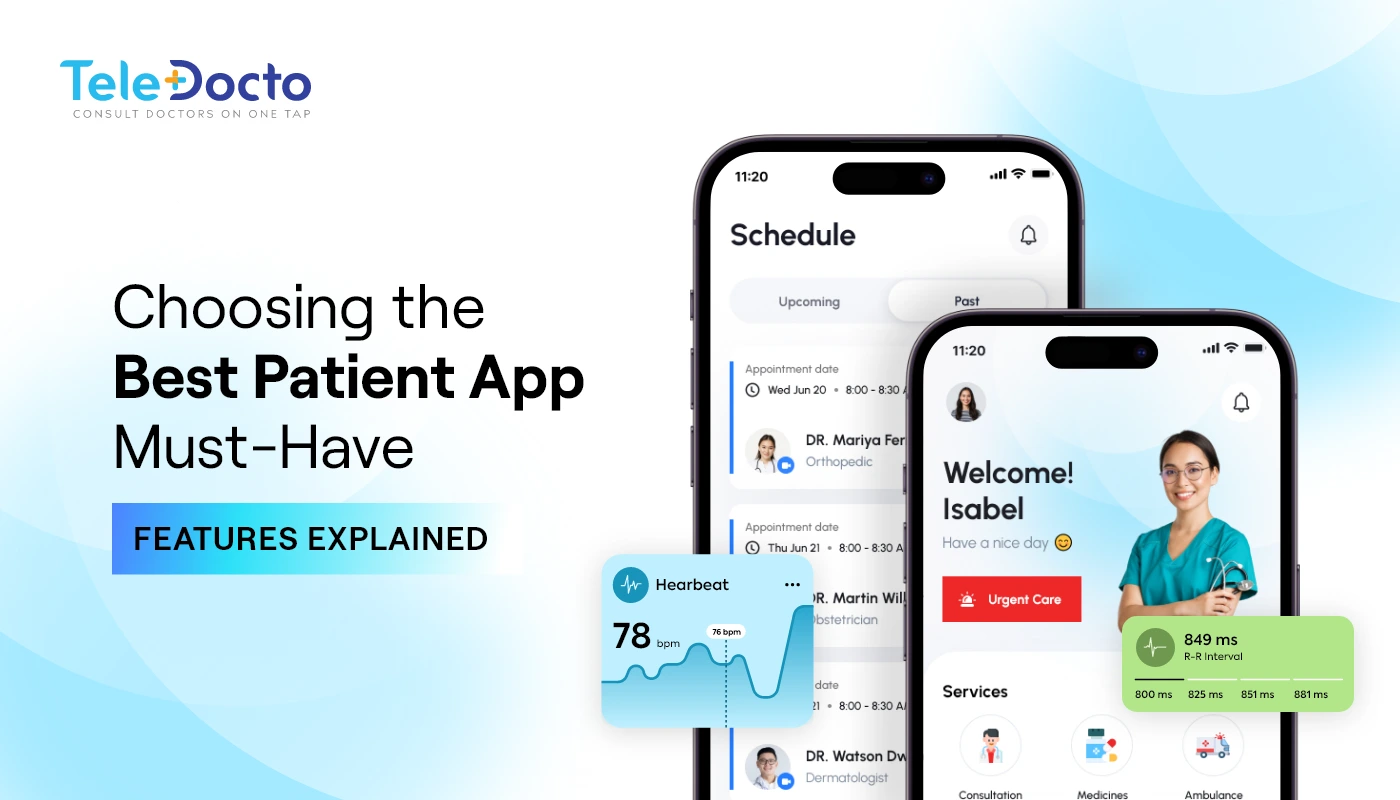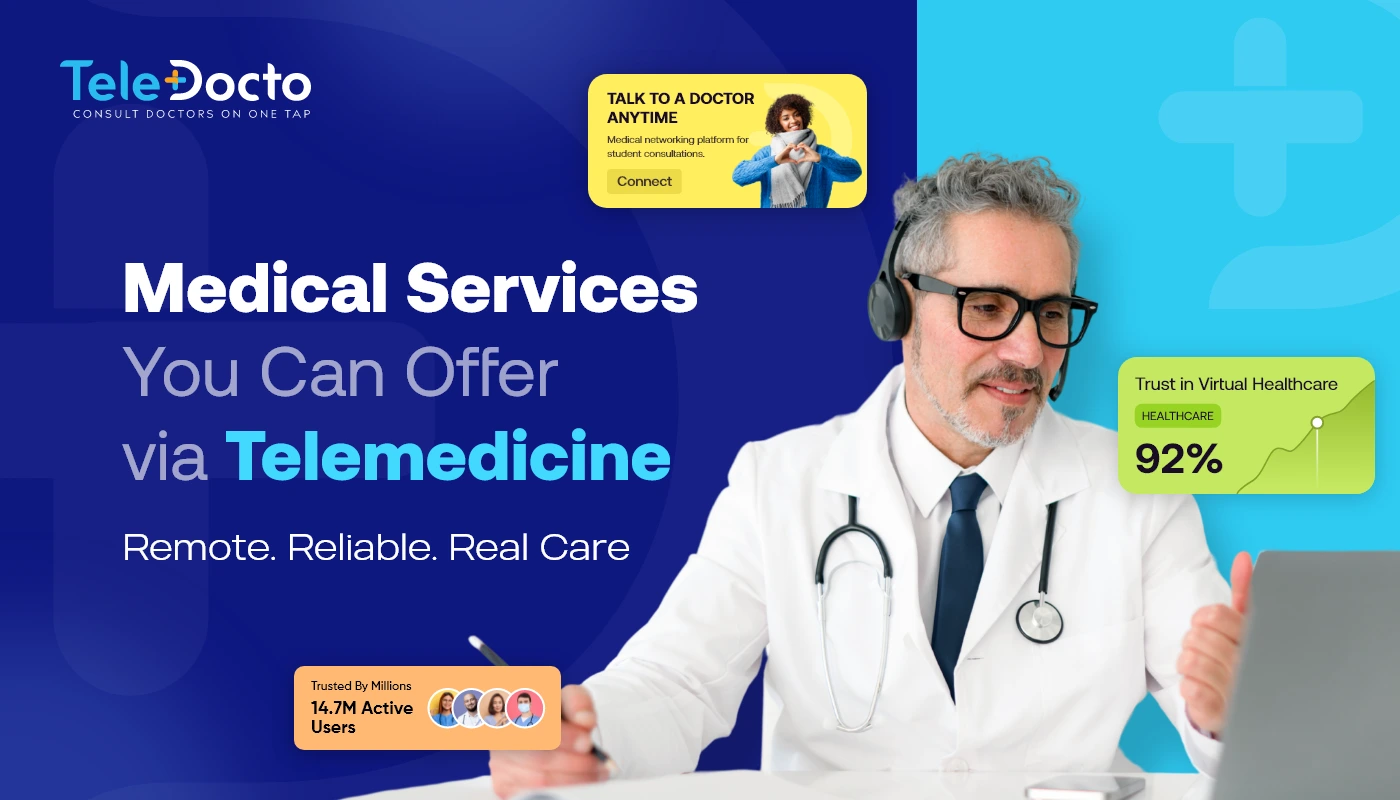
The Future of Telemedicine: Trends to Watch in 2025
Accessing telemedicine apps to connect with a healthcare provider is now considered the go-to way to seek a virtual consultation with doctors. While it might have once sounded like something from the future, it has become a standard part of healthcare over the past 5-10 years!
Telemedicine apps have become the basis of healthcare revolution in 2025 and beyond. The global telemedicine market is projected to reach $251 billion by 2025, rising at a rate of 25% annually. This swift growth is reforming patient care by making healthcare more accessible and flexible than ever before.
New Ground for healthcare: Understanding this Shift
Telemedicine apps lie at the core of this revolution. These apps upgrade the way we interact with healthcare providers. These apps offer services like virtual doctor visits, remote patient monitoring, and personalized digital health tools—all at our fingertips. With AI-powered assistants and advanced telehealth platforms leading the charge, these apps are setting new benchmarks for convenience and care.
Let’s read how modernization is leading the way for a healthier and more connected future.
Telemedicine Trends in 2025
1. AI-Driven Virtual Health Assistant
AI-enabled virtual health assistants in apps enhances overall healthcare results. These assistants provide businesses with the ability to offer more personalized patient interactions, quickly answering questions, assisting with scheduling, and providing initial virtual diagnoses. Through AI integration, telemedicine apps can render a great patient experience, decrease waiting times, and support follow-ups and medication reminders. This ensures reliable treatment adherence.
2. Remote Patient Monitoring Expansion
Remote patient monitoring and real-time data integration are advancing rapidly, offering businesses a competitive edge in healthcare sector. Now, the telemedicine platforms are using wearables to track key health signs including blood pressure, heart rate, and sugar levels. Based on patient’s real-time data, it helps the healthcare providers to make quick informed decisions and provide proactive care without any delay.
3. 5G Network Connectivity
5G technology revolutionizes telemedicine by enabling faster data transfer and higher-quality video calls. With 5G, telemedicine platforms can offer more seamless, responsive online doctor consultations, even in remote areas with limited internet access. This allows healthcare providers to conduct high-definition consultations and remote inspections. Furthermore, 5G accelerates the processing of large data sets like medical images. It improves real-time diagnostics and service delivery too.
4. Machine Learning
Machine Learning is a new norm in healthcare industry! ML transforms healthcare to great extent by allowing businesses to offer personalized recommendations based on user data. ML analyzes patient history, preferences, and habits in telemedicine platforms to create personalized experiences for them and so, improve outcomes. By 2025, more telemedicine platforms will adopt this advanced technology trend for enhanced interactions and early detection of health issues.
5. Augmented Reality (AR)
Augmented Reality holds a significant share in telemedicine sector, helping medical practitioners diagnose patients more efficiently. It enables healthcare service providers to examine symptoms of illness virtually and guide patients through self-assessments, making online consultations more accurate. By 2025, AR is expected to be widely used in telemedicine apps, especially in areas like dermatology, eye care, and physical therapy. This technology will make remote evaluations easier and provide patients with a more interactive healthcare experience.
6. Advanced Telemedicine Platforms
Telemedicine platforms in 2025 will emphasize on refining user experience and interoperability. These platforms would work on mobile devices, tablets, and personal computers, providing intuitive and easy-to-use interfaces. In this aspect, enhanced EHR integration has ability to streamline data sharing for better care continuity and coordination. Advanced security measures, including encryption and biometric authentication can also help, and ensure robust patient data privacy, compliance, and trustworthiness.
Wrapping Up
Telemedicine’s future in 2025 is full of possibilities. It will continue to improve accessibility, efficiency, and outcomes. By utilizing the above hi-tech trends in healthcare, stakeholders can ensure that telemedicine reaches its full potential, transforming the health services for patients and providers alike.
Frequently Asked Question
Mobile app development is helping healthcare by simplifying access to medical info, appointment scheduling, medication reminders, and telemedicine. These apps keep patients engaged, streamline tasks, and improve communication, leading to better outcomes and more efficient healthcare.
AI is shaping the future of healthcare in different ways. AI can improve diagnoses, predict trends, and personalize treatments. It helps with early disease detection and administrative tasks management, leading to reduced costs and enhanced decision-making approach.
Mobile healthcare apps, wearables, and telemedicine platforms are a few digital health tools. These tools improve healthcare by enabling real-time monitoring, remote consultations, and personalized care. Using these digital gears, it becomes easy to manage health for patients and healthcare providers both.
The future of mHealth apps will offer a more personalized healthcare experience. These apps will use AI, wearables, cloud computing, and advanced technology to improve patient monitoring, medication adherence, and chronic disease management. Also, these apps would enable proactive healthcare and smooth communication between patients and providers worldwide.
Digital healthcare is changing the industry with remote consultations, telemedicine, and digital diagnostics. Wearables and health apps give patients more control, while providers enjoy better workflows, data management, and improved outcomes, making healthcare more accessible and affordable.
Recent Blogs

Telemedicine has changed the way how patients connect with doctors. From routine check-ups to specialist consultations, more people now expect healthcare to be just a click away. But for hospitals, clinics & startups running a telemedicine platform, the real challenge isn’t just about having the technology. It’s about having enough qualified, licensed providers to meet […] Read more

Patients are no longer willing to stand in long queues or make endless calls just to schedule an appointment or check test results. A patient portal app changes this dynamic, putting essential healthcare services right into patients’ hands and making communication and care management seamless. It gives patients the same level of simplicity and ease […] Read more

Going to the doctor’s clinic is often challenging due to long travel distances, waiting times, and crowds there! It clears that the way traditional healthcare delivery was managed, has certain limitations. Enter telemedicine; not as a replacement, but as a modern upgrade to the healthcare department. From a general consult to specialist care, telemedicine has redefined […] Read more